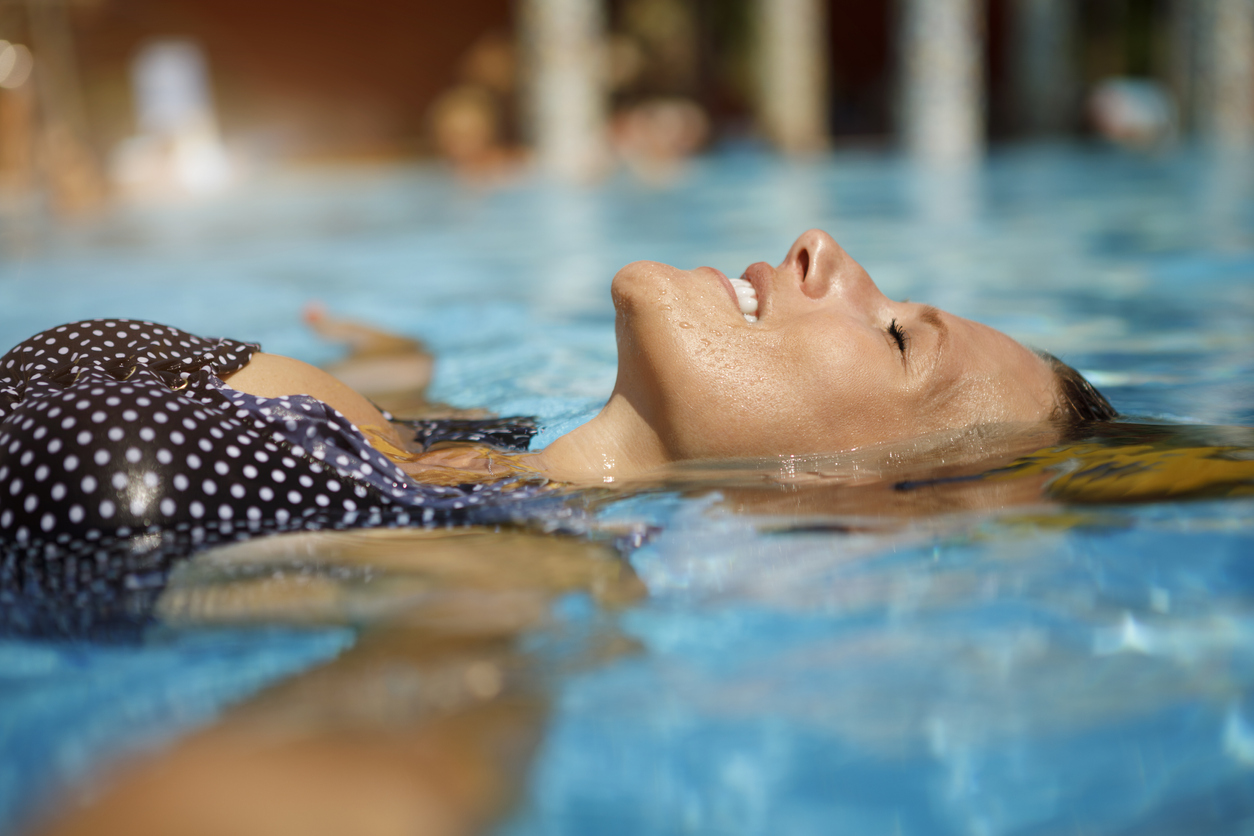Treatments
What Is Hydrotherapy?

Hydrotherapy involves the use of water for physiotherapy or therapeutic therapy to promote positive physical and mental health. It may also be referred to as water or aquatic therapy.
Types of hydrotherapy
Hydrotherapy consists of various water applications, temperatures and states (e.g., ice, liquid or steam). Types of hydrotherapy include the following:
- Sauna
A sauna is a room that is heated to approximately 160 degrees Fahrenheit (70 degrees Celsius) to provide a dry heat. A small amount of water added to heated stones increases humidity. Typical sessions last from five to 20 minutes. Saunas may help with blood pressure, cardiovascular diseases, neurocognitive diseases, and lung function. - Aquatic physical therapy
A licensed physical therapist individualizes aquatic physical therapy according to personal needs. Buoyancy provided by water allows freedom of movement that may not be possible on land. Aquatic physical therapy can help build muscle strength, relieve muscle spasms, decrease pain levels, increase flexibility, and improve circulation. - Aquatic exercise
Also known as water therapy, aquatic exercise can help relieve pain, while strengthening muscles. It includes water aerobics, lap swimming, or group exercises. Aquatic exercise can help with osteoarthritis, advanced osteoporosis, muscle strains or tears, and back pain. It is also helpful when land-based exercises are not physically possible. - Cold water immersion therapy
Cold water therapy involves brief immersions (e.g., cold showers, ice baths, swimming, etc.) in water that is between 50 and 59 degrees Fahrenheit (10 to 15 degrees Celsius). It can help relieve muscle soreness, boost the immune system, and decrease anxiety and depression. Heart rate, blood pressure, and circulation can be affected; therefore, a health care provider should be consulted prior to cold water immersion therapy. For safety precautions, another person should be present to observe and monitor. A slow warm-up should also follow cold water immersion therapy. - Sitz bath
A sitz bath involves immersing the buttock and genital area into lukewarm water for 10 to 15 minutes. Increased blood flow speeds up the healing process. A sitz bath helps relieve pain, soreness, inflammation and burning caused from hemorrhoids, anal fissures, constipation, diarrhea, prostatitis, or vaginal childbirth.
Conditions treated with hydrotherapy
Hydrotherapy may be beneficial in treating various conditions that include, but are not limited to, the following:
- Inflammation
- Hemorrhoids
- Fibromyalgia
- Lower back pain
- Joint issues
- Nervous system disorders, such as multiple sclerosis
- Depression
- Anxiety and stress
- Headaches
- Muscle disorders
- Arthritis
When to avoid hydrotherapy
Hydrotherapy should be avoided if certain conditions are present, which include, but are not limited to, the following:
- Epilepsy
- Fever
- Open or infected wound
- Skin infection
- Cold or flu
- Recent chemotherapy
- Heart condition
- Uncontrolled blood pressure
- Kidney disease
- Incontinence
- Chlorine allergy
Conclusion
Specific considerations may prevent partaking in hydrotherapy; therefore, individuals should consult with their health care provider before beginning hydrotherapy. This is especially true for sauna or cold water immersion therapy.


















